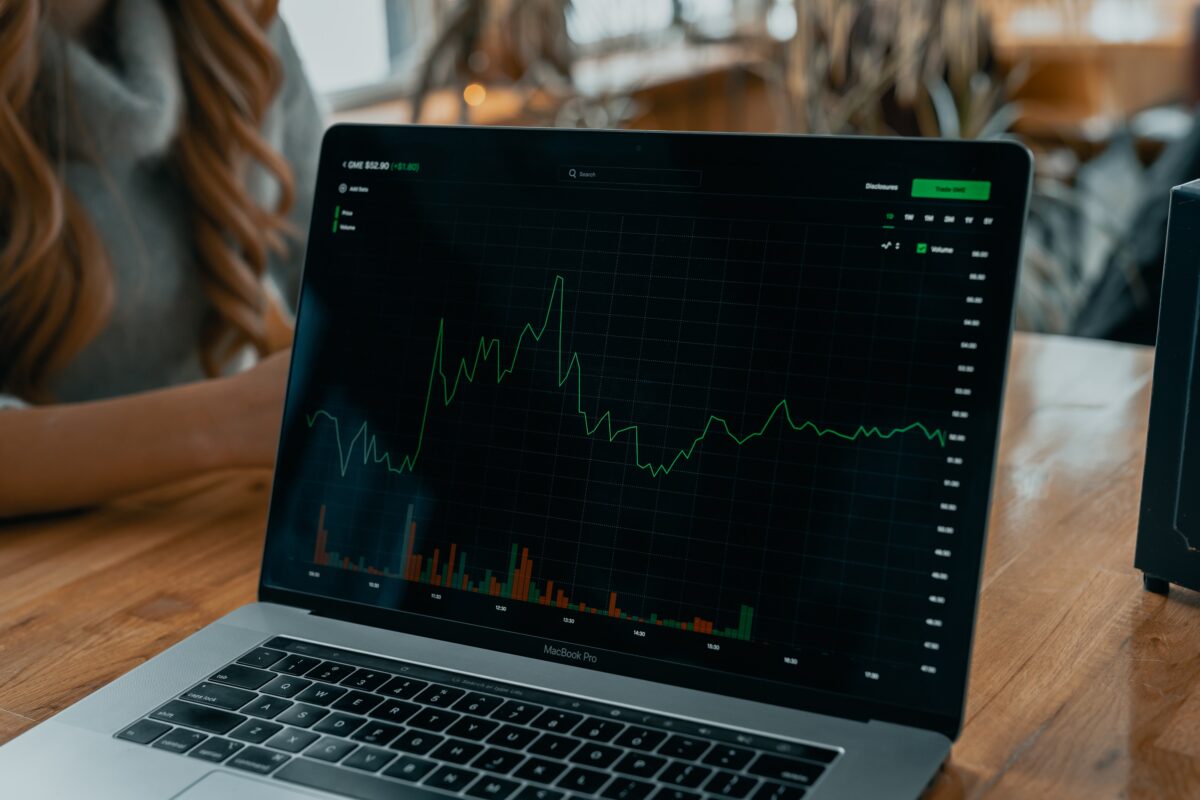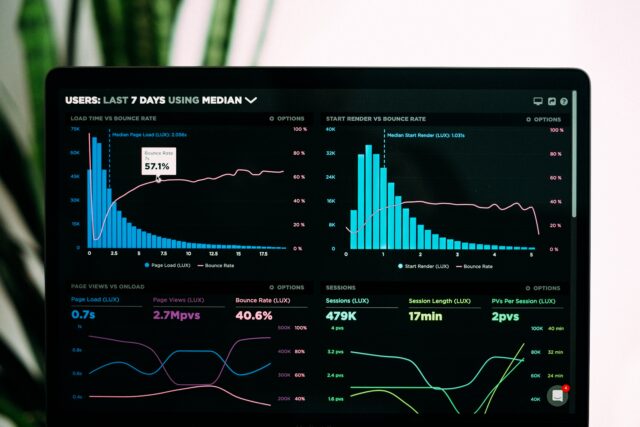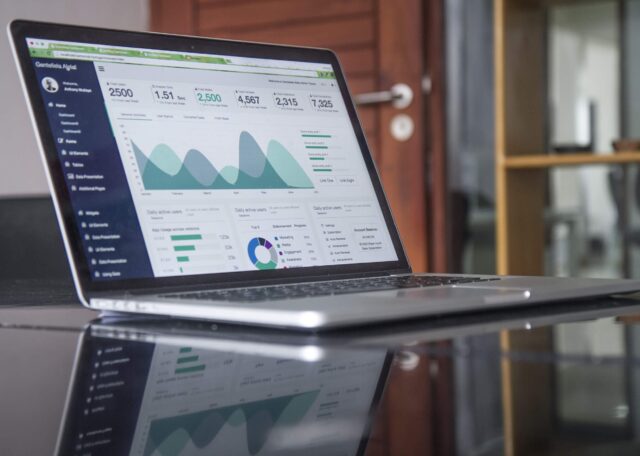Let’s face the facts: you can no longer track 100% of users 100% of the time.
There’s an ever-growing list of tracking hurdles facing marketers today, including:
- International cookie privacy laws
- Browsers limiting cookie use
- Apps blocking third-party data
- Users disabling tracking tools
- Multi-touch and multi-device paths to conversion
Luckily, with conversion modelling, you can begin to reveal missing conversion data and still make informed digital marketing decisions.
What is conversion modelling?
In a nutshell, conversion modelling guesses at missing conversion data by using the available conversion data mixed with other information available.
Let’s look at a very simple example of how conversion modelling could work:
- A website has conversion data for Campaigns A, B, & C
- Only 50% of the website users accept marketing cookies
- Therefore there should be on average double the overall conversions for Campaigns A, B, & C as we only see half of the actual total
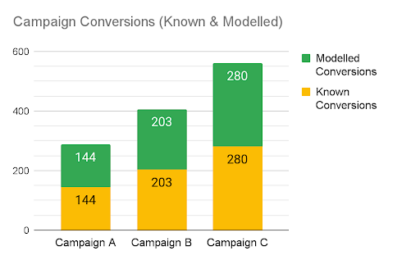
In reality, conversion modelling will look at every data segmentation such as browser, device, time of day, location, etc. and then apply machine learning to estimate where the missing data lies and how many modelled conversions to put back into the system.
Recovering missed conversion data allows paid media advertisers to measure their return on investment more clearly which can lead to more efficient ad spend. It also shows the truer value of email, organic, and other online channels you can invest in.
Google states that its conversion modelling system doesn’t exaggerate the number of conversions modelled and doesn’t employ any shifty digital fingerprinting tactics.
On a side note, Meta, and a few other ad platforms, perform conversion modelling with their internal data and can still recover some lost conversion data.
Unlocking conversion modelling with Consent Mode
Consent Mode is Google’s name for delivering web and app data about users who’ve requested not to be tracked online.
Online privacy laws state that users can’t be tracked from page to page on a website, but Google’s Consent Mode can still provide anonymous data about individual pages visited and actions taken on the website.
Consent Mode integrates easily with Google Tag Manager and several cookie control platforms; we recommend Cookiebot as the simplest solution in this case.
Google published a detailed guide to implementing Consent Mode on Google Analytics 4 and Google Ads to help you get started. If you’d like support with setting this up across your advertising channels and using the data to make strategic business decisions, please get in touch.
Reporting with conversion modelling
However, one of the easiest ways to model conversions is to do so outside of Google Analytics, ad platforms or Google Tag Manager. Instead, set up an automated reporting system through a tool like Google Looker Studio and you can simply apply your own modification factors there.
For example, if you look into your customer relationship management system (CRM) or content management system (CMS) and click to see the number of form fills achieved in a set time period – let’s say it’s 120 – and then compare to the number of form fills GA4 recorded post-cookie blocking, you’re likely to see a lower and less accurate number in Google Analytics. If GA4 recorded 90 form fills for the same period, this would be a modification factor of 120/90 = 1.33.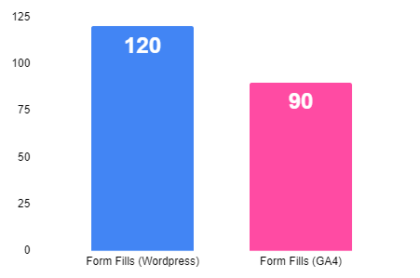
To model the data in your reports, make a simple calculated field in Google Looker Studio (GLS) to multiply the number of GA4 conversions by 1.33, and hey presto, you’ve now got modelled conversions that provide more accurate reporting and can be used for making more calculated decisions.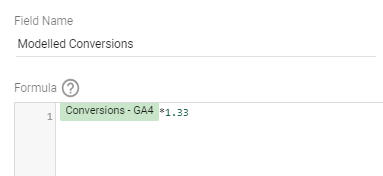
Challenges
Partial credit: you may find that when implementing this modelling approach you end up with decimal points in your figures. It may be a little confusing at times to claim that a channel has produced 12.64 conversions (what on earth is 0.64 of a conversion?) but remember that marketing attribution is all about using data to make useful decisions and simplifying the complexity of the real world problem in order to make these decisions.
Changes over time: be aware that as consumer habits change – or even just the setup of your consent banner – your modification factor might change along with it. You should continuously monitor what the real modification factor is and adapt your formulae accordingly. Don’t just change the modification factor blindly, but instead build out a more complex formula – like shown below – in order to apply different factors for different time periods, ensuring that you’re always comparing apples to apples.
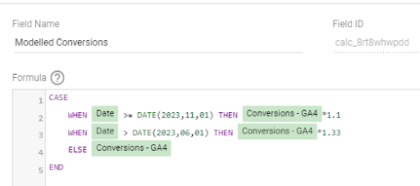
Summary
Whilst conversion modelling isn’t a simple task, it’s certainly not as complex as it might look at first glance – and importantly, it’s not going anywhere. Marketers can expect to find themselves grappling to work more and more with only a subset of the overall data – modelling will be a key method in countering this growing issue.
Traditional media has been taking a conversion modelling approach for decades, so perhaps it’s time to learn from the old guard. Need a hand with getting start? Let’s talk.

